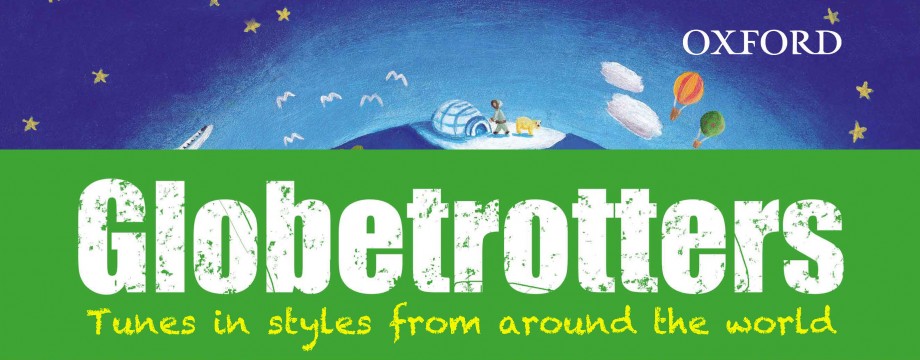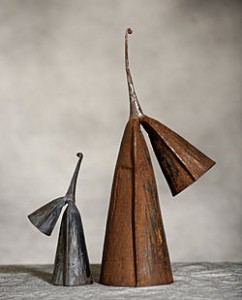Click here to go back to the list of music styles
The Ewe people of Southern Ghana are famous for their complex, polyrhythmic music, performed on drums and percussion instruments. Each instrument plays its own rhythmic pattern, and all the patterns fit together to create a mesmerising rhythmic texture. Here are some Ewe musicians performing:
Much of the Ewe drumming music is in 12/8 time. This time signature can be divided into either 6 crotchet pulses or 4 dotted crotchet pulses, and rhythmic patterns based on these 4 and 6 beat pulses are played simultaneously. One of the key rhythmic patterns is the “bell pattern”, played on a metal bell called an agogo or gangokui bell:
There are different bell patterns with different numbers of strokes, depending on the music being played. The basic 5-stroke bell pattern looks like this when it’s written down:
Try clapping this rhythm with your metronome set to a crotchet pulse of 126 bpm (6 beats per bar). Then try clapping the rhythm to a dotted crotchet pulse of 84 bpm (4 beats per bar). If you haven’t tried this before it may take a bit of practice! Remember that the quaver pulse remains constant whether you are counting crotchets or dotted crotchets. Once you’ve got the hang of this you’ll notice that the two rhythms together (the bell pattern plus the crotchet pulse or the bell pattern plus the dotted crotchet pulse) create their own rhythmic pattern. This is called an “additive rhythm”. When you can hear the additive rhythm it becomes much easier to play the two rhythmic patterns together. When you feel really confident, try playing the bell pattern on your violin.



